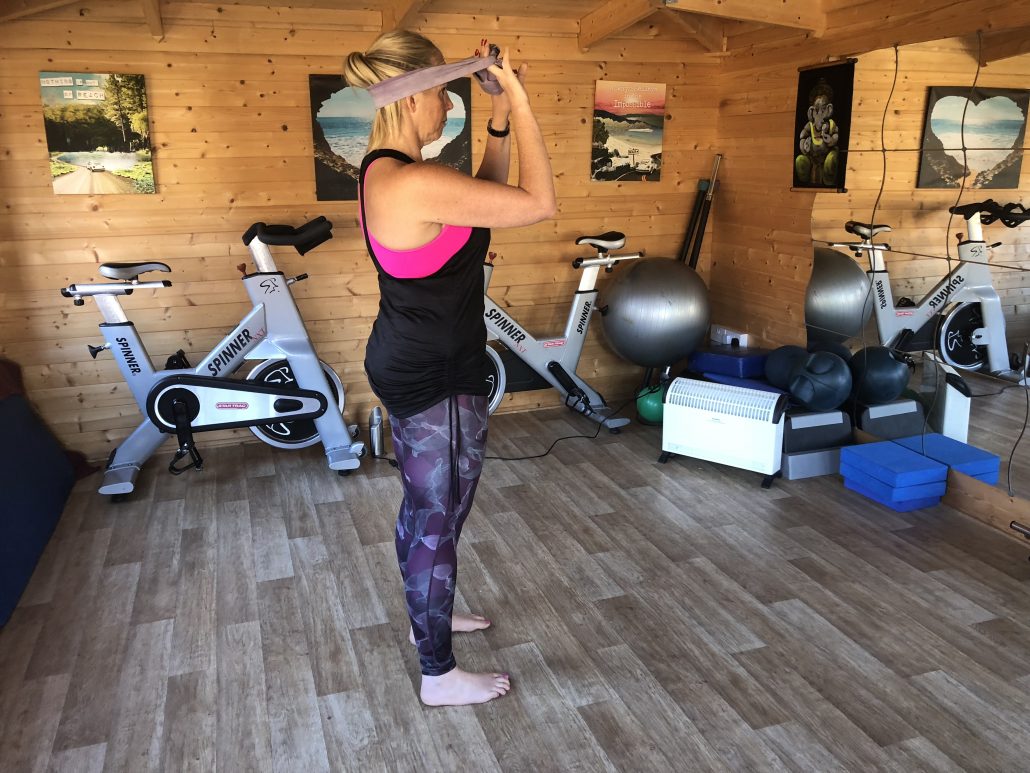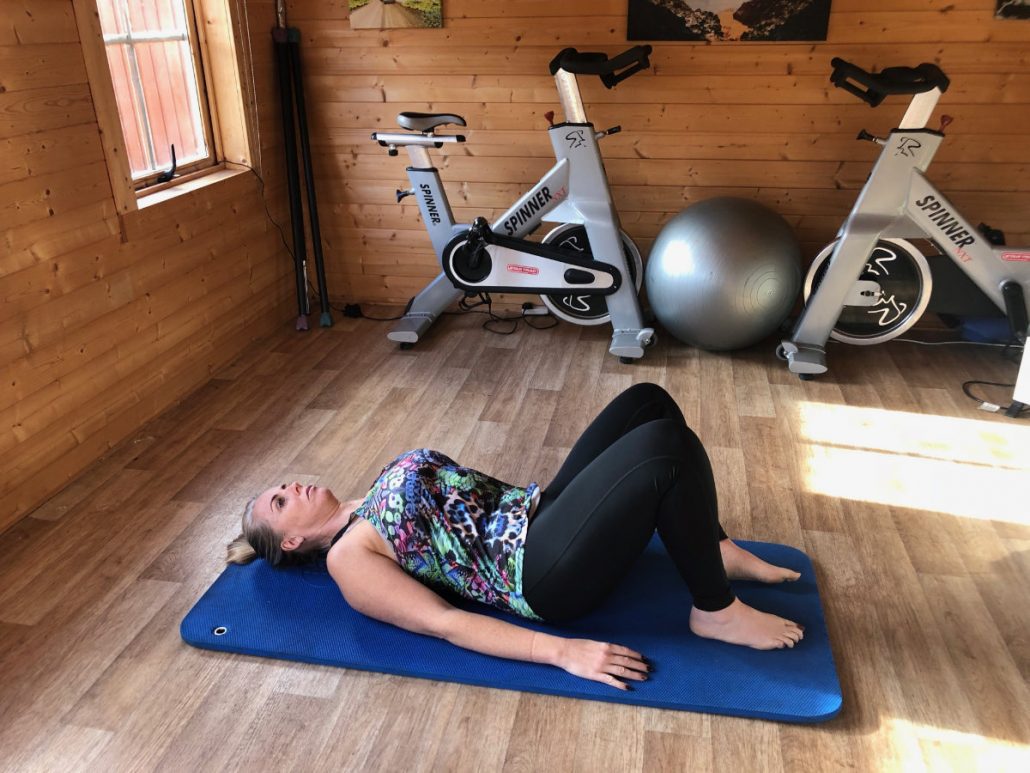We will now look at each of these 10 principles in detail:
1. Neutral Spine (perfect posture)
Neutral Spine is the ideal posture, all joints are in a neutral position. Finding Neutral Spine before starting any exercises either by lying down or by standing is essential for any Pilates exercise.
Good Posture is vital and by continually practising Neutral Spine standing up is an important part of the Pilates warm up. Having poor posture will prevent your body from functioning efficiently, and it will also undermine your balance and co-ordination. The danger is that if we develop a habit of having poor posture, our body will accept it as normal and will learn to suffer any associated aches and pains.
With patience and consistency posture can be improved, some poor postures can be corrected surprisingly quickly, others will need more time to remedy.

Correcting head poking forward with a loop band

Neutral Spine lying down
Finding Neutral Spine standing up – with legs hip width distance apart with feet facing forward, make sure hips are in neutral, in other words pelvis is not tilted forward or back. Distribute your weight evenly through out your legs.
Imagine an invisible string lifting you up from the top of your head, slide your shoulders down your back and place your hands at the side of your body opening up the chest.
Finding Neutral Spine lying on your back – with legs hip width distance apart, knees bent and ankles under knees, feet facing forward. Lengthen the back of the neck (not allowing chin to poke up to the ceiling), slide shoulders down the back, and imprint the spine into the mat. Ensure hips are in neutral position and not tilted under or out (imagine a bucket of water on your belly and not allowing it to spill). Engage TVA (The Belt) and Pelvic Floor muscles.
